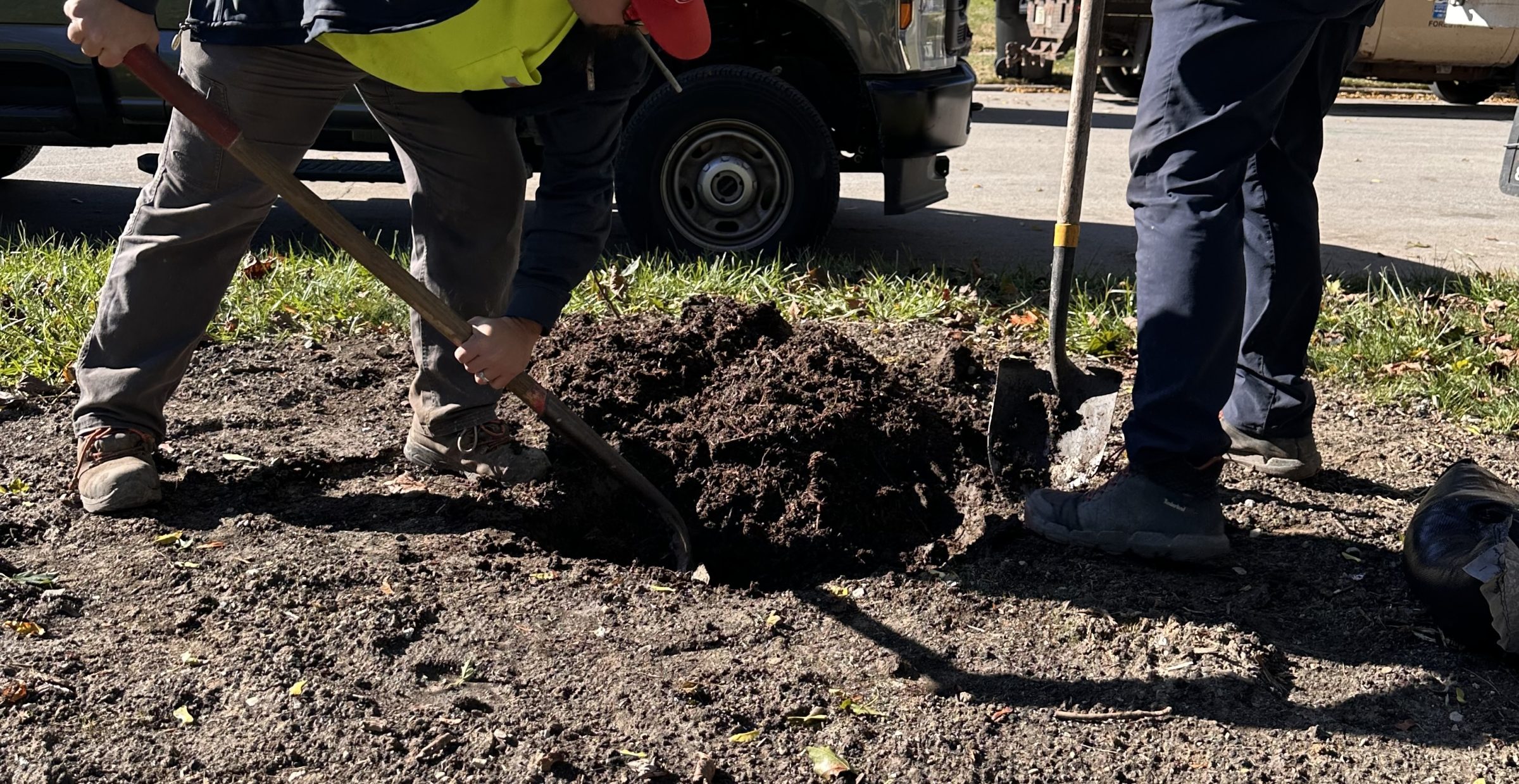
Overview
Bareroot trees are dormant trees that are dug in the autumn, stored without soil around their roots over the winter, shipped to garden centers, nurseries or municipalities in the spring. They are typically planted directly in ground before the bud “break” (aka, open) in spring or after the leaf fall during mid- to late-autumn in Wisconsin.
Why Bareroot Trees?
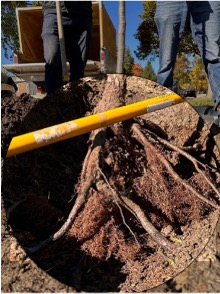
Bareroot trees are less bulky to transport, handle and plant in ground. They hold more root mass than balled and burlapped (B&B) trees, are comparatively inexpensive and can be planted correctly at proper depth (Picture 1). Another advantage of planting bareroot trees is the ability to visually inspect and correct any deformed roots before planting. Young trees with a caliper size of 1.5” to 1.75” are ideal for bareroot transplanting as they provide quick establishment.
Planting Site Assessment
Before planting, assess the planting site conditions for the selected tree. Select a tree that is suitable for the region’s zone of cold hardiness, withstands the light availability (sun or shade) and tolerates soil conditions (moist or dry and soil pH) in the desired planting site. Evaluate the space availability from the perspective of when the tree becomes mature in growth habit (height and width). If there are overhead utility wires, consider planting small species that don’t grow taller than 30 feet.
Call Diggers Hotline to check that utility lines don’t interfere with the planting site and plant at least 5 feet away from any type of underground utility lines.
Refer to Choosing the Right Landscape Plants – Factors to Consider for more information.
Bareroot Tree Species for Fall Planting
Spring is the ideal time for planting bareroot trees; however, fall planting can also be successful especially for hardwood trees in mid to late fall and for conifers in early autumn. For a list of bareroot tree species suitable for fall planting, refer to University of Minnesota Publication “A Guide to the Construction and Management of Community Gravel Beds” pages 67-73.
Storing Bareroot Trees
Immediately upon receiving the bareroot tree, presoak the tree roots in a hydrogel slurry mix *, place the roots in a large garbage bag and securely tie the ends. Plant the tree within 2 hours. If planting is delayed, store the bareroot tree in the same bag for up to 48 hours in a cool and dark sheltered area (garage) where the temperature does not drop below 40° F.
* Hydrogels are synthetic polymers that absorb substantial amounts of water, causing them to swell and form a soft, gel-like structure. In the tree nursery industry, they serve as an effective tool for protecting plant roots from desiccation during storage and transportation.
For bareroot trees that are not presoaked with hydrogel slurry, water the tree roots thoroughly and wrap them with wet burlap, layers of moist newspapers, fine wood chips like excelsior, or moist peat moss. Place the tree roots in a large garbage bag and securely tie the ends to retain moisture. It is best to plant the bareroot trees immediately. However, if necessary they can be stored in a cool and dark sheltered area (garage) where the temperature does not drop below 40° F for up to a week. During storage, periodically check the moisture level of the rootzone media inside the bag and sprinkle moisture as needed to prevent roots from drying.
A cool, overcast day with little or no wind is the best time for planting bareroot trees.
Planting Day

- On the planting day, bareroot trees that have not been presoaked in hydrogel, should be soaked in a pail of tepid water for 30 minutes in a shaded area.
- Dig a shallow, and wide planting hole to accommodate all the tree roots (Picture 2). The planting hole should be 2 to 3 times wider than the root spread if the landscape soil is a compacted clay, less so if the soil is sandy or very organic.
- Make a small mound at the bottom center of the hole to position the tree and to adjust depth of the root flare.
- Prune any J roots, encircled roots, or broken roots. Straighten any tangled roots.
- Spread the roots evenly around the planting hole.
- Set the tree in the middle of the planting hole sitting on top of the small mound.
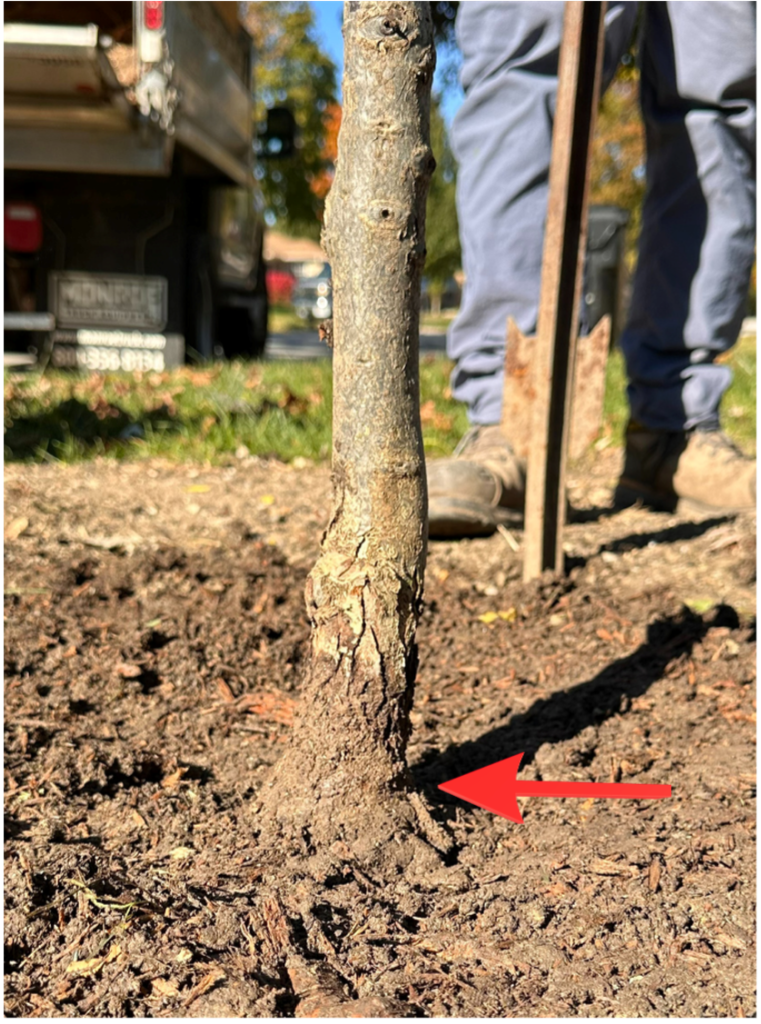
- a) Position the tree where the beginning of its root collar remains visible above the planting hole. To check the planting depth, lay a shovel across the hole to observe where the root collar meets and adjust the planting depth.
b) If the root collar is not easily recognized, bury the first main root no deeper than one inch with the backfill soil. - Backfill the planting hole with the original dugout soil. It is generally unnecessary to use any soil amendments like compost, peat, or sand.
- Halfway during backfill of the planting hole, water the hole to collapse air pockets and finish backfilling completely.
Gently tamp the backfilled soil and make sure that the beginning of the root collar is visible above the soil surface. - Remove any turfgrass or vegetation over the planting hole to reduce competition for water and space around the tree.
- Water the tree thoroughly, then apply shredded wood chips or bark mulch to about 3 to 4 inches deep around the planting hole. Keep the mulch a few inches away from the root collar.

- For post planting maintenance, soak Tree Diaper® watering bags overnight and place them underneath the mulch around the base of the tree trunk. Alternatively, use a generic brand of slow-releasing tree water bags and fill them once or twice a week during the growing season.
- For fall planting, continue watering the trees to keep the soil consistently moist until the first hard freeze occurs.
- Generally, fertilizers are not recommended for trees unless the soil test for the site location recommends certain amendments.
- Drive two stakes on the outside of the planting hole, positioned opposite to each other and aligned against the prevailing wind direction (Picture 4). Use a broad, flat strap (ArborTie®) to secure the tree trunk to each stake (Picture 3). Staking should be limited to only one growing season.
References to specific brand names or products in this publication are for your convenience and are not an endorsement or criticism of one product over similar products.
Authors: Vijai Pandian, Horticulture Educator, UW–Madison Division of Extension, Matt Koepnick, Forester, City of Racine, Forestry Division, Cony Gutierrez-Sainz, Urban Tree Project Coordinator, City of Racine, Forestry Division
Published: October 2025
Reviewed by: Dr. Gary Johnson, University of Minnesota Extension, Allen Pyle, UW–Madison Extension, Bruce Spangenberg, UW–Madison Extension
References
- Gary. J, University of Minnesota Extension, A Guide to the Construction and Management of Community Gravel Beds, pp. 67-73.
https://trees.umn.edu/sites/trees.umn.edu/files/2021-11/A%20Guide%20to%20the%20Construction%20and%20Management%20of%20a%20CGB_Final_Version_2021_v2.pdf - Nina. B, Andrew. H, Cornell University and City of Ithaca, Creating the Urban forest: The Bareroot Method.
http://www.hort.cornell.edu/uhi/outreach/pdfs/bareroot.pdf - University of Massachusetts, Bareroot Tree Planting Guide Online Fact Sheet
https://www.umass.edu/urbantree/factsheets/24bareroottreeplanting.html - Western Washington University, Bareroot Tree Planting Guide Online Fact Sheet
https://cenv.wwu.edu/lead/bare-root-plant-guide


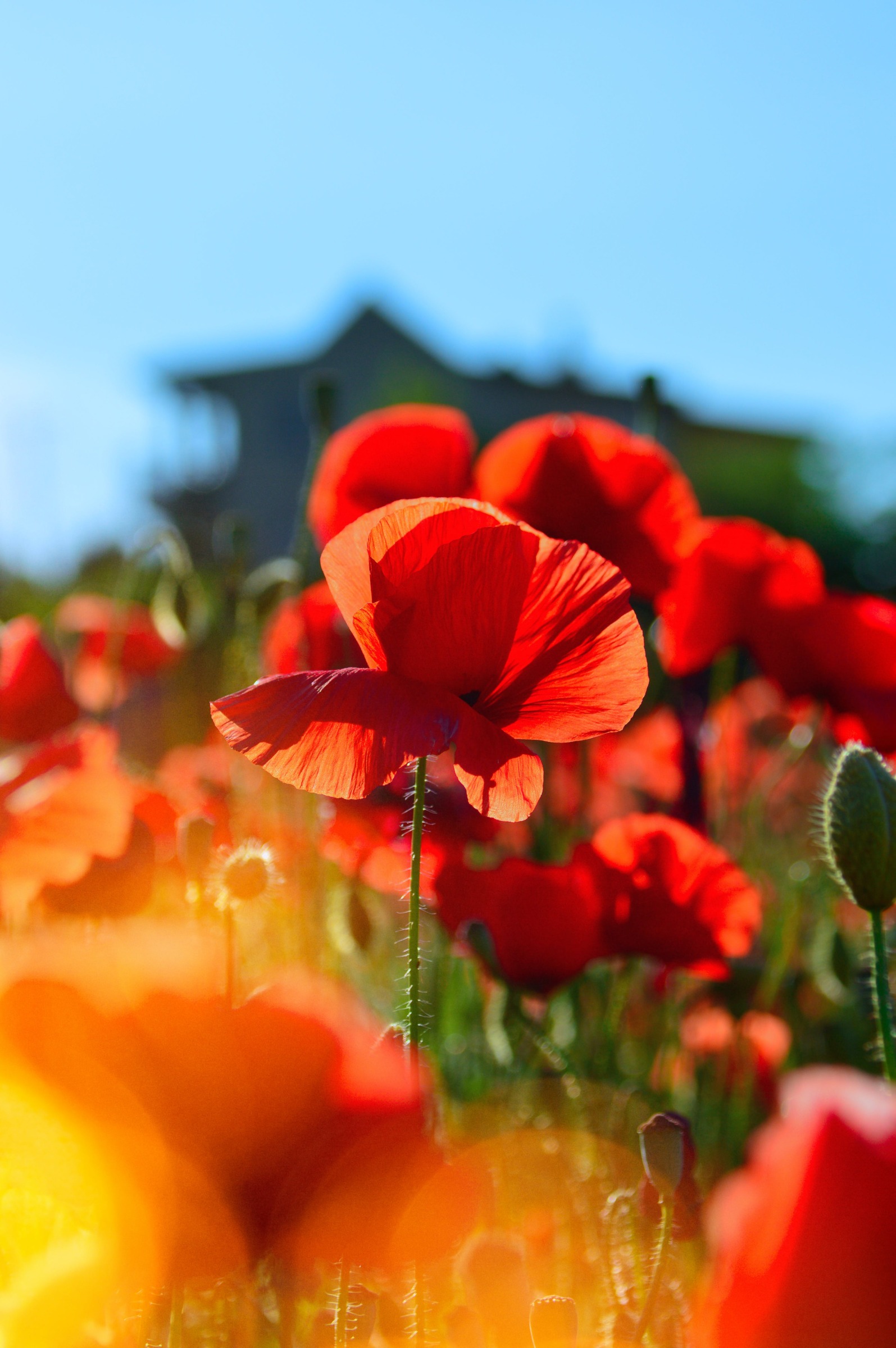
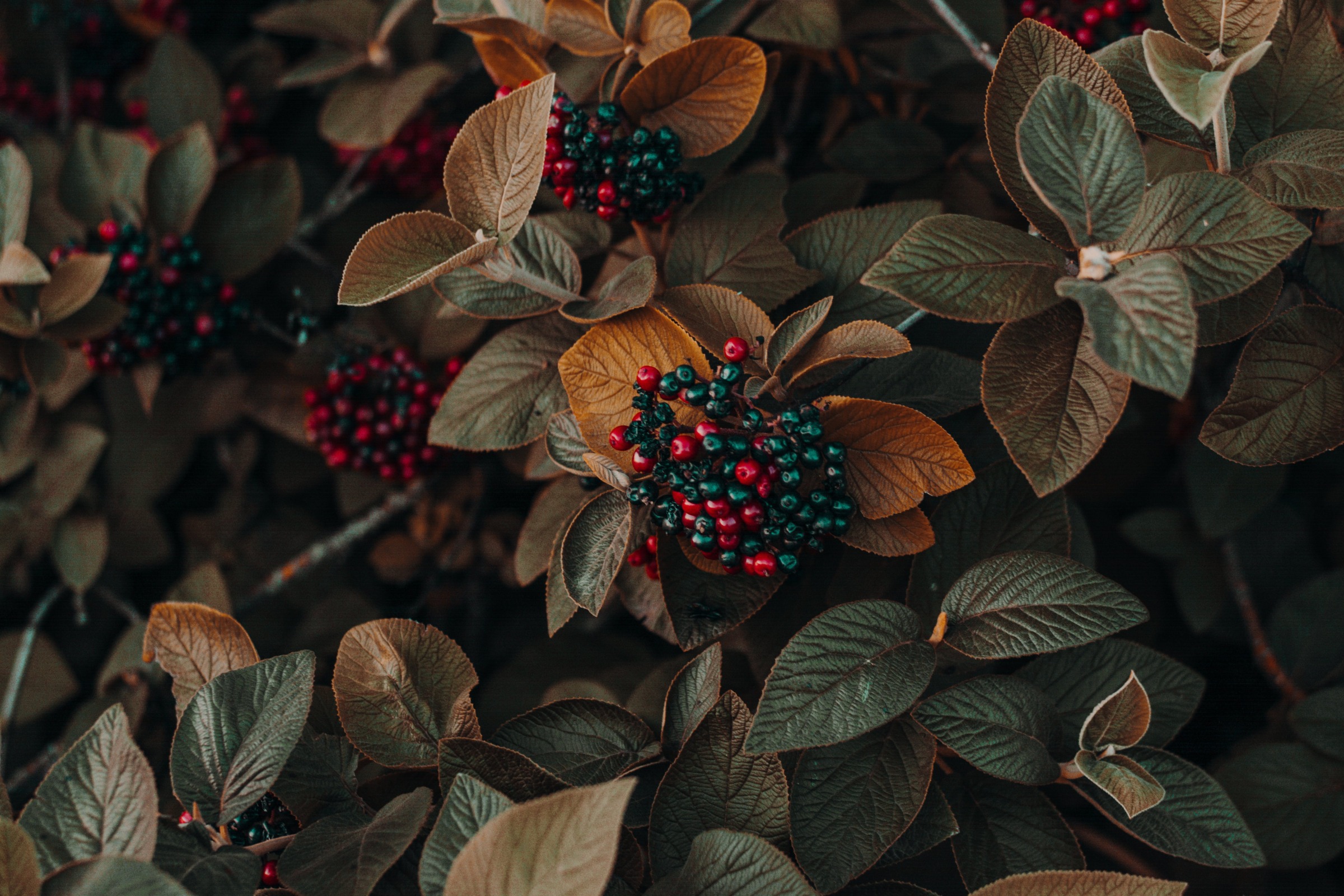
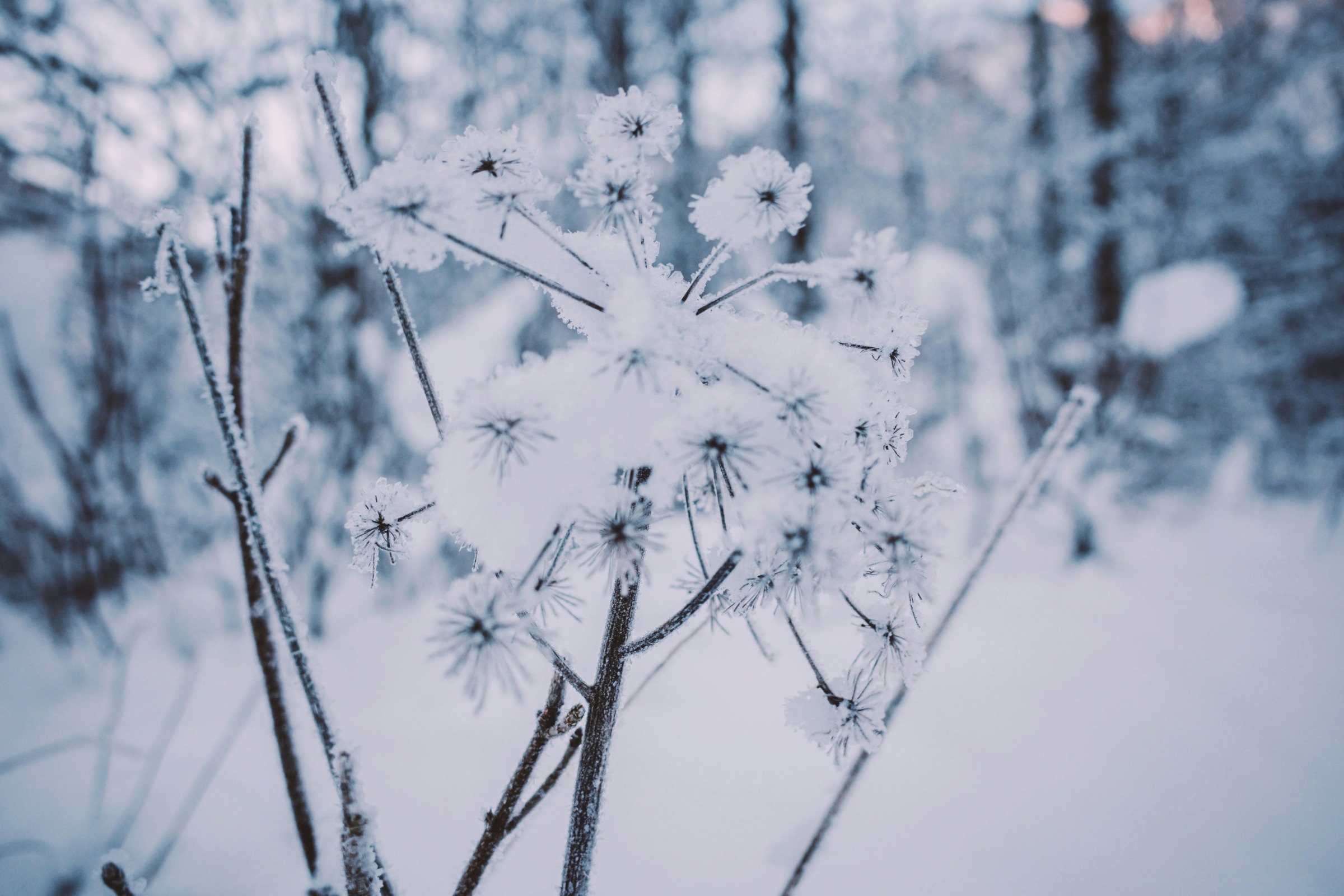
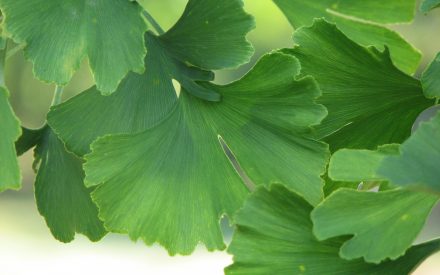 Trees and Shrubs for Diversity and Climate Change
Trees and Shrubs for Diversity and Climate Change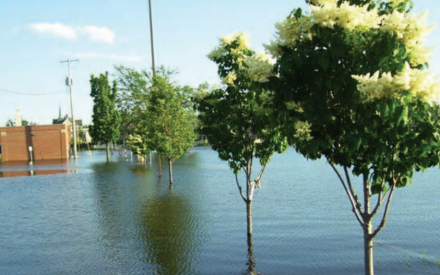 Effects of Flooding on Woody Landscape Plants
Effects of Flooding on Woody Landscape Plants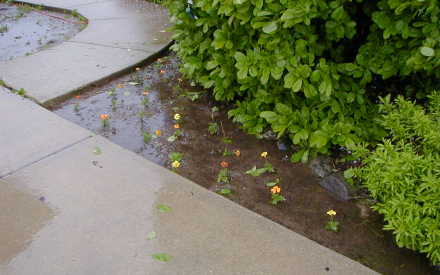 Safely Using Produce from Flooded Gardens
Safely Using Produce from Flooded Gardens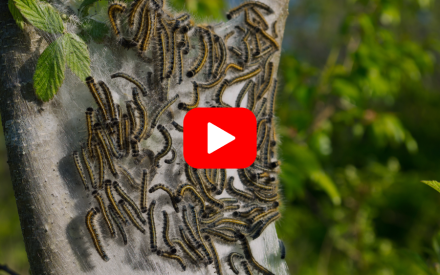 ▶︎ Watch: Torching Tent Caterpillars
▶︎ Watch: Torching Tent Caterpillars